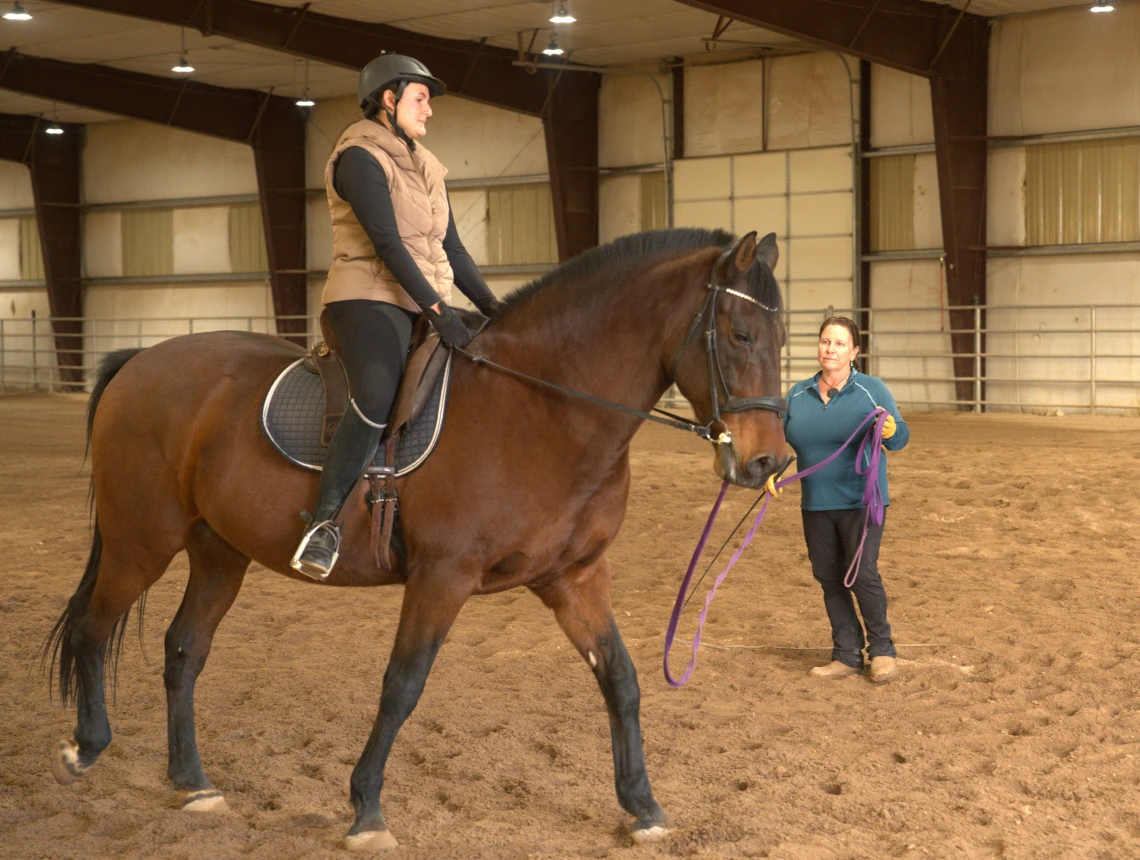University of Arizona launches innovative interdisciplinary program to bridge Equine Science, Mathematics, and Biomechanics

A new interdisciplinary program at the University of Arizona is aiming to expand student opportunities in equine science, applied mathematics, and biomechanics through a collaboration between the Department of Mathematics, the School of Animal and Comparative Biomedical Sciences, and the Al Marah Equine Center.
The new initiative, proposed by Dr. Laura Miller, Professor of Mathematics and Biomedical Engineering, and her colleagues, Dr. Kevin Lin, Dr. Haley Collins, Dr. Netzin Steklis, and Bernadette Genua, hopes to increase participation in STEM by women and Hispanic students, while fostering student interest in careers as large animal veterinarians.
At first, the combination of mathematics and equine sciences may seem unconventional, but for Miller and the team, the two disciplines are deeply interconnected.
“There's a lot of mathematics that one can do looking at animal movement,” Miller said.
Since last spring, Miller and her students have been working with the Al Marah Equine Center, researching the biomechanics of horse gates and respiration.
“We're looking at Horse gates and how that's coupled to breathing and heart rate, and applying mathematical models to understand the coupling,” Miller said.
The program, which received financial support from the U of A Provost Investment Fund, seemed like a good mechanism to support the development of new classes and create more research experiences for students, encouraging students to pursue an education in science fields, according to Miller.
“We need more people in math and engineering, and also more large animal veterinarians,” she said.
Part of the goal for this new initiative is to address the shortage of large animal vets.
“Having horses, there aren't a whole lot of veterinarians,” Miller said. “Most people want to do small animal work, because a lot of students don't have experience with large animals. So a huge role is to get pre vet students working with large animals.”
The other component of the proposal is to incorporate engineering, biomedical engineering and applied math in the form of CURE courses, to further interconnected discipline work.
“There is quite a bit of modeling work at this point, in human medicine,” Miller said. “You could take an MRI and image someone's aorta or carotid artery, and then run simulations as engineers and mathematicians, and if there's some defect or clot, you know what surgery would help.”
However, Miller said the same modeling capabilities and programs are largely not available for animal systems.
“Right now, if a project is looking at organs, it's human organs, because you can find models online. The National Institutes of Health has repositories for coronary arteries and valves and so forth, but those models are really hard to find for animals,” Miller said. “So we're working on a collection for that so students can do those sorts of projects.”
Miller believes the new proposal initiatives have the potential to open up new research areas for mathematicians and engineers and attract more people to those fields, specifically students who are interested in animal science.
“There are things in animal science that could be done in math and engineering that they might not know about,” she said. “And they might be interested in choosing those majors.”
The team’s Provost Investment Fund proposal outlines a new CURE class which Miller said would introduce first years and transfer students to biomechanics, using tools from engineering and mathematical modeling by analyzing horse gate as well as respiration and heart rate.
“We're also going to have a biomedical engineering senior design project related to horses, and summer research programs, so students can either work with large animal veterinarians or animal science, or work on some of the math modeling,” Miller said.
The proposal also includes piloting a summer REU, developing an introductory horsemanship course designed for pre-vet students, establishing internships with community partners to provide students with experience in the equine industry.
“Hopefully even some high school camps to get students interested in applying to U of A and working with horses,” Miller said. “If you look at, you know, in mathematics and in engineering, there are more women in fields that are related to healthcare, animal science and biology. Having research topics that really connect with the interests of women is important to bring more women into stem.”
The team hopes that through their new funding, and interdisciplinary cooperation, they can enhance experiential learning, improve student success, and build new opportunities in STEM, ultimately contributing to student’s career readiness.
“I think it's really exciting to have mathematicians and animal scientists and vets work together. I think it's unique,” Miller said. “Maybe it will inspire more groups to do this as well.”

